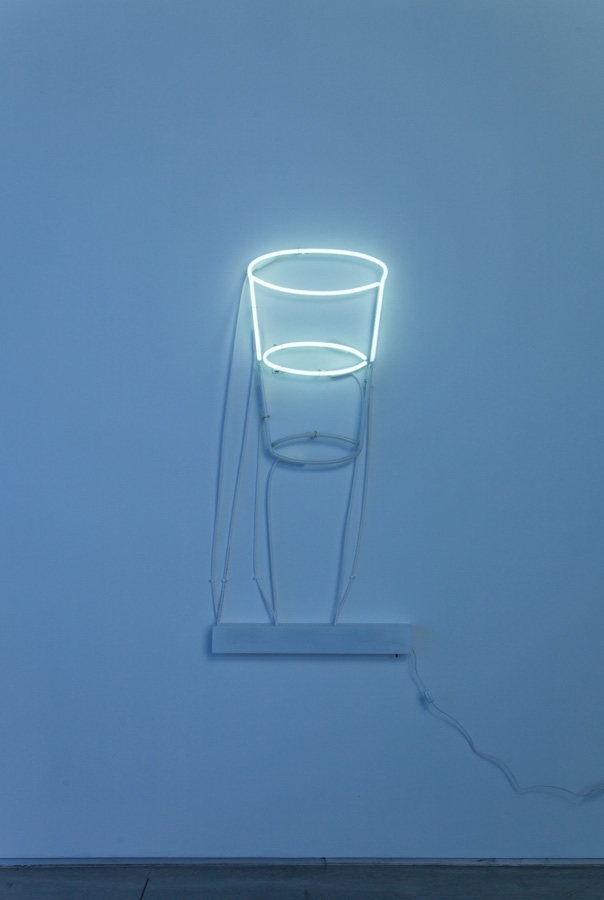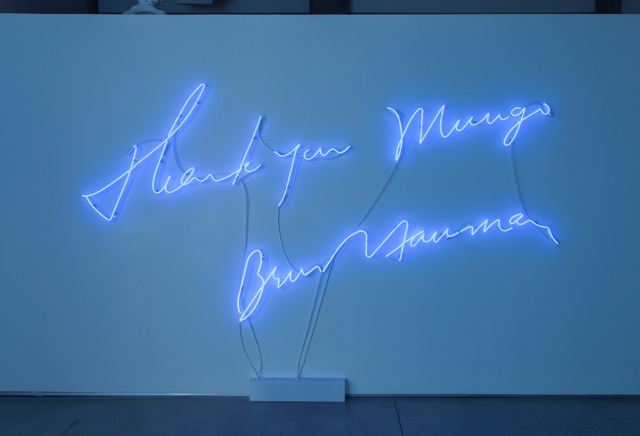
© » KADIST
Mungo Thomson
Drawing & Print (Drawing & Print)
The White Album (2008) presents a compilation of one hundred issues of Artforum magazine released between 1970 and 1979. As with Will Rogan’s MUM series, also included in the Kadist Collection, vital information is now missing: All of all the articles and features have been removed, leaving only ten years of advertisements. In an unusual way, The White Album reminds us that this important New York-focused magazine was originally founded in 1962 in San Francisco to promote Bay Area artists before it moved to Los Angeles in the mid-1960s in search of a wider advertising base.

© » KADIST
Mungo Thomson
In Thomson’s Untitled (TIME) , every front cover of TIME magazine is sequentially projected to scale at thirty frames per second. In a way, this work both examines the construction of history and the history of the influential magazine, which was founded in 1923. In addition to the play on “time”—one of Thomson’s ongoing obsessions—this piece highlights and continues the artist’s encyclopedic impulse, also seen in The White Album (2008), to record the history of the spaces he inhabits.

© » KADIST
Mungo Thomson
Starting with Bruce Nauman’s iconic artwork, The True Artist Helps the World by Revealing Mystic Truths (Window or Wall Sign) , Mungo Thomson’s neon sign is one of a series that replaces Nauman’s quixotic mini-manifesto with aphorisms from ‘recovery’ culture, especially those made popular by alcoholics anonymous. Thomson is referencing the lore that Nauman’s work (the first of many neons he’d make in the following years) had been inspired by a neon beer sign found in a corner-store in San Francisco that he used as his studio in the late 60s. This particular work has a self-critical subtext, as it also suggests the act of using another artist’s work, in an endless spiral of influence, is akin to a form of insanity.
Mungo Thomson
- location: Los Angeles, California
- year born: 1969
- gender: male
- nationality: American
-
2000-2009
Mungo Thomson
Drawing & Print
2008(Drawing & Print) The White Album (2008) presents a compilation of one hundred issues of Artforum magazine released between 1970 and 1979...
-
2010-2019
Mungo Thomson
2010In Thomson’s Untitled (TIME) , every front cover of TIME magazine is sequentially projected to scale at thirty frames per second...
Mungo Thomson
2014Starting with Bruce Nauman’s iconic artwork, The True Artist Helps the World by Revealing Mystic Truths (Window or Wall Sign) , Mungo Thomson’s neon sign is one of a series that replaces Nauman’s quixotic mini-manifesto with aphorisms from ‘recovery’ culture, especially those made popular by alcoholics anonymous...

